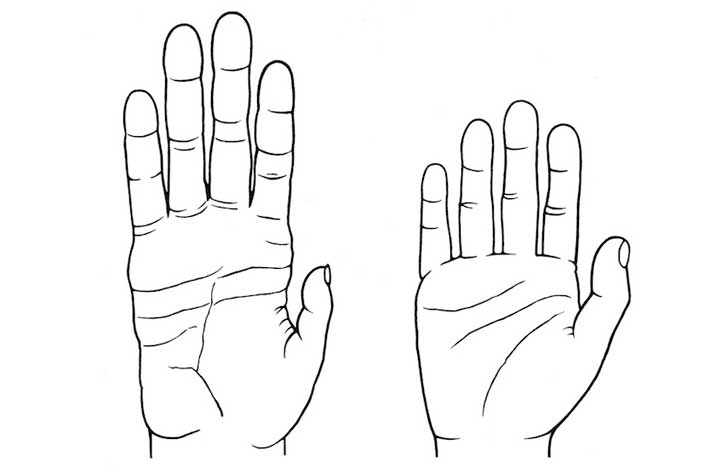Many researchers have long speculated that the human hand evolved significantly over time—from ape-like to adept, modern-day appendages. After all, our hands are elegant tools, capable of precisely gripping a tiny needle, strumming a guitar or buttoning a shirt.
But a new study from a George Washington University professor suggests just the opposite: Human hand proportions have not changed very much since the human and chimp lineages last shared a common ancestor around 7 million years ago. The chimpanzee hand, by contrast, once resembled something akin to a human’s and evolved into something quite different.
The findings, published in Nature Communications, reverse assumptions about what the common ancestor of humans and chimpanzees may have looked like. They also challenge the belief that the human hand evolved as a result of pressures from natural selection to become better toolmakers.
“It’s a widely accepted paradigm that the ancestor of humans had a hand like a chimpanzee, with long fingers and short thumbs that were not as proficient at handling things,” said Sergio Almécija, an assistant professor at the Center for the Advanced Study of Human Paleobiology who led the study. “But as we began finding older and older ancestors of humans, their hand proportions looked very much like a modern-day human’s.”
New molecular tools in the 1980s provided DNA evidence that both chimpanzees and humans derived from a common ancestor some 7 million years ago. However, despite sharing 96 percent of our genes with our ape relatives, human and chimp hands vary greatly. We have a long thumb relative to our other fingers, which allows us to easily grip and manipulate objects much better than our shorter-thumbed relatives.
For decades, the primary school of thought among scientists was that humans’ and chimps’ common ancestor looked almost identical to a chimpanzee, including chimp-like hands. Then, human hands evolved in recent evolutionary history. The evolution, they thought, could be explained as a specific adaptation that would allow humans to make and use stone tools.
But for Dr. Almécija, this theory didn’t entirely add up.
“When you look at the hands of living apes, they all look superficially very similar. So, it is likely to assume that their shape is more primitive, and human hands are the ones that have changed the most,” he said. “But no one had ever actually quantified this.”
Dr. Almécija and his colleagues began to collect and compare measurements of the thumb and finger proportions of chimpanzees, gorillas, humans and other primates in natural collections all over the world. The study also incorporated some of the earliest members of the human lineage, as well as extinct apes.
The researchers found that the hands of the common ancestor of chimps and humans, as well as perhaps much earlier ancestors, had just slightly longer fingers and shorter thumbs than those of modern-day men and women. Our hands, it turns out, are more “primitive” than our hairy relatives. Chimpanzee fingers, on the other hand, have elongated over time, allowing the animals to move better on the tree canopy.
This discovery suggests that the evolution of the human hand is not what led humans to become better toolmakers, since its size and shape have remained relatively constant. Instead, Dr. Almécija hypothesizes that tool making was the result of the enlargement and evolution of the human brain.
What are the implications?
“It means that evolution is really complex,” Dr. Almécija said.
Still, the researcher stresses that his results do not show that humans are more archaic than apes.
“We are not saying that humans are less evolved than chimpanzees. Because obviously humans have many other traits—like brain size—way more evolved than chimps,” Dr. Almécija said. “But in the case of the hand, chimps did evolve more.”


